Near the coast of Hong Kong, what remains of the Walled City of Kowloon still sits amongst the modern, bustling cityscape.
At one time home to more than thirty-three thousand people, the tiny area, less than a square mile, was built up over the course of the 20th century into a towering, cramped, and crime-ridden metropolis that was almost entirely self-sufficient.
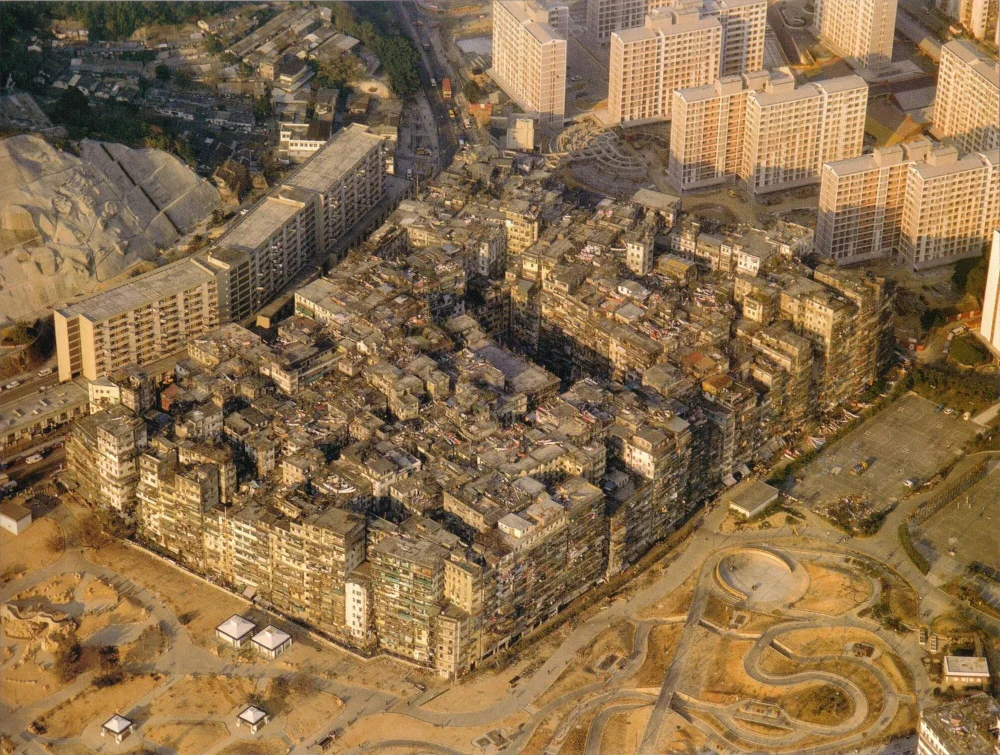

The city of Kowloon first took shape in 1843, when what had once been a sparsely-populated military outpost on the peninsula of Kowloon was developed by Qing dynasty officials into a fort to house around 150 soldiers and a few Government officials.
Intended to ward off further British incursion into Chinese territory, the walled city remained one of the few areas of Hong Kong unencroached by British rule until 1912, when the fall of the Qing dynasty allowed British forces to claim the city for the first time.
In the following decades, the city would mostly be occupied by squatters, reaching a population of just under five hundred in the first half of the twentieth century.
World War II
During World War II, the city was occupied by Japanese forces, and some of its walls were torn down to expand a nearby airport.
But, in the aftermath of the Japanese occupation of Hong Kong, the Chinese government would re-claim jurisdiction over Kowloon, and the population soon exploded with refugees seeking a new home, bringing with it a host of practical and social issues.
Several thousand residents began to expand the city, with houses literally being built on top of each other – it wasn’t uncommon for new homes to be built using aspects of existing ones, knocking down walls to make use of a neighbour’s staircase or doorways.
With little in the way of building management, safety regulations were rarely enforced or even considered.
As the city began to expand upwards, dozens of houses home to hundreds of families looking to find a safe haven in the walled city after the chaos of World War II and the Japanese occupation.
Where Kowloon had once been a military and governmental outpost, it turned into a rapidly expanding city with its own unique infrastructure, economy, and even a custom-built water system to keep water moving through the ever-growing towers of houses.
Government oversight on the development of the city was limited.
Post War
In the late 1940s, there was an attempt to destroy a large portion of the slum housing that had sprung up since the influx of refugees had arrived, which had been met with widespread disapproval and violent resistance from the people of Kowloon, who rioted when police tried to move them.
In the following years, authorities and the residents of Kowloon would come to an uneasy compromise, allowing the city’s exponential growth to continue – but leaving the citizens of Kowloon vulnerable to disasters in the process.
A fire tore through the city in the first month of 1950, spreading faster than it could be controlled through the wooden buildings stacked on top of each other, leaving an estimated 17,000 people homeless.
But the threat of fire or other natural disasters soon paled in comparison to a flourishing criminal underground that began to define the city to the outside world.
Cesspit Of Crime
Without police oversight or enforcement of health, planning, or tax laws that applied to the rest of the country, Kowloon would become infamous throughout the 1950s as a haven of crime, violence, and lawlessness.
Attracted by the promise of sanctuary from police interference, warring triad groups began to take control of the city’s brothels, opium dens, and drug manufacturers.
Kowloon rapidly became synonymous with the production of opium and heroin, exported to the rest of the country from within the city’s ever-expanding heights.
It soon became the epicenter for the production of opiates in Hong Kong, and police didn’t dare to venture into the city outside of brief incursions in large groups – the criminal presence was so huge, it simply wasn’t safe otherwise.
Over the next couple of decades, the city would continue to grow at a mind-boggling rate, expanding from the Qing dynasty buildings that had formed the groundwork all those decades ago.

A cap had to be placed on the upward expansion of residential buildings at fourteen storeys high, as they were getting in the way of the flight paths from the nearby Kai Tak airport.
Where it had once been home to just a few hundred people, by the early 1980s, in less than a square mile of space, more than three hundred houses served as a home for more than thirty-three thousand people.
Their homes, nicknamed “lover’s houses” due to the way they leaned into each other, became increasingly insular.
Many residents could go months without seeing sunlight, as it just didn’t filter down through the chaotic stack of homes that comprised most of the residential areas.
Drug trafficking, and gambling parlors (the most popular game being Mah Jong) served as the backbone of the city’s economy, and the only contact the citizens of Kowloon had with the outside world for many months of the year was the sound of jet engines from the nearby airport roaring overhead.
The roof became the only place to access fresh air and sunlight and became a regular playground for local children despite the dangerous conditions.
Despite the appalling living conditions, dangerous construction, and rampant criminal activity within the city, though, there were still many people who looked on their time there fondly.
The city served as an impressively productive ground for industries like food production (especially the regional specialty jook-sing noodles) and textile and plastic manufacturing, with many of the products created there being exported out to the rest of the country and even, in some cases, the world.
The city had, in the words of Hong Kong poet Leung Ping Kwan, “the warmth and intimacy of a single household” – the constantly-changing landscape allowed adaptation to problems as they arose, a kind of living organism that responded to the needs of it’s citizens as and when they came up.
The cramped living conditions created a sense of community among residents, with some becoming protective of the city despite its shortcomings and apparent dangers.
While there were doubtless massive quality-of-life problems within the city – which had, by the mid-1980s, been recognized as a slum – the community had created a self-sufficient home that could provide education, religion, and employment.
The Beginning Of The End
Towards the end of its existence, the city was even elevated with a few services from a government looking to improve living conditions, with an official postal service (the whole city was served by a single, very busy postman) and improvements to the water supply taking place as it expanded in population.
A series of police raids allowed authorities to get a handle on the crime rates within the high-rise city walls.
But, as the 1980s wore on, the gap between life in Kowloon and the rest of Hong Kong became harder and harder to ignore. Living conditions were far below those in the rest of the country, and introducing an infrastructure to such a unique and complex system seemed impossible.
As a result, and after much resistance from the residents of Kowloon, plans were officially put in place to raze the city in 1987.
These plans were initially kept secret, but soon, the evictions began: city residents were offered compensation to leave their homes, receiving on average more than $300,000 in the process.
While most of the residents agreed, by the beginning of the 1990s, more than four hundred households still remained in what had now been nicknamed the “City of Darkness”.
The End Of Kowloon
In July 1992, riot police entered the city and drove out the last of the residents and, for the first time in nearly a hundred and fifty years, Kowloon was once again virtually deserted.
With the last residents finally taking their leave, the process of demolishing the city began in 1993 and finished in April 1994, with residents being relocated nearby.
The following year, the grounds the town had been built on were turned into a park.
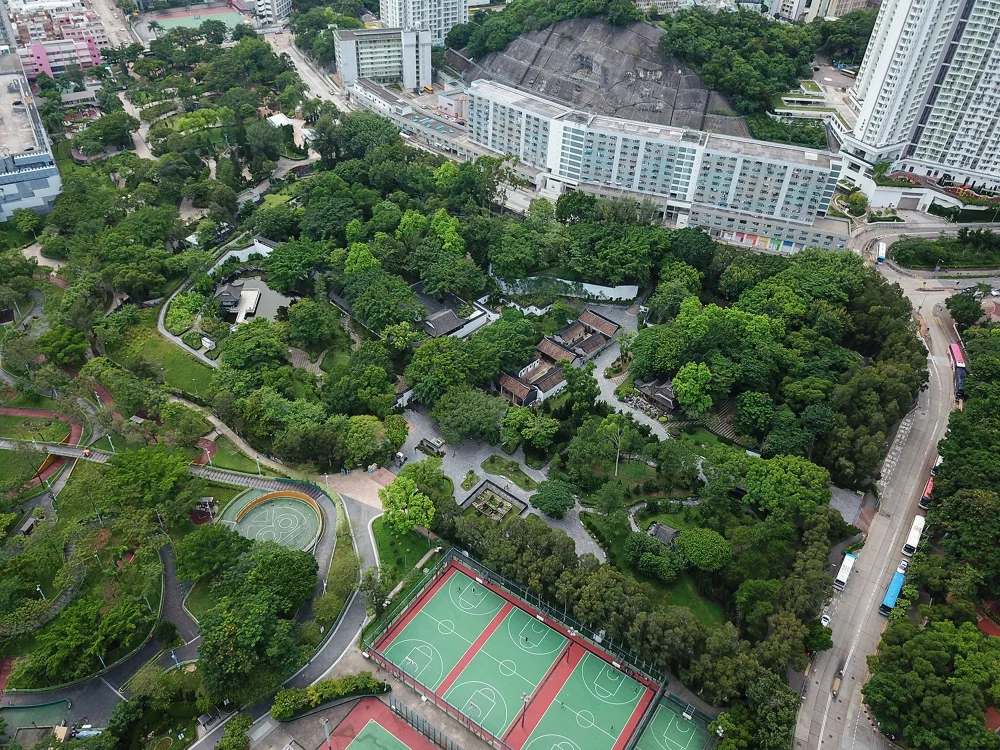
The city has also turned up a couple of times in pop culture – shortly before its demolition, it was used as a backdrop for the Jackie Chan movie Crime Story and served as the setting for the indie horror game Welcome to Kowloon as well as a level in Call of Duty.
The unique structure of the city attracted the interest of many modern architects and artists, including photographer Greg Girard, who described the city as “…a kind of architectural touchstone in terms of what a city can be – unplanned, self-generated, unregulated. It was vital and vibrant and every part of it was being used”.
Now, all that remains of the city’s origins are the handful of Qing dynasty buildings originally constructed as part of Kowloon’s military outpost in the 1840s and the memories of residents who once called it home.
Sources
https://edition.cnn.com/travel/article/kowloon-walled-city/index.html



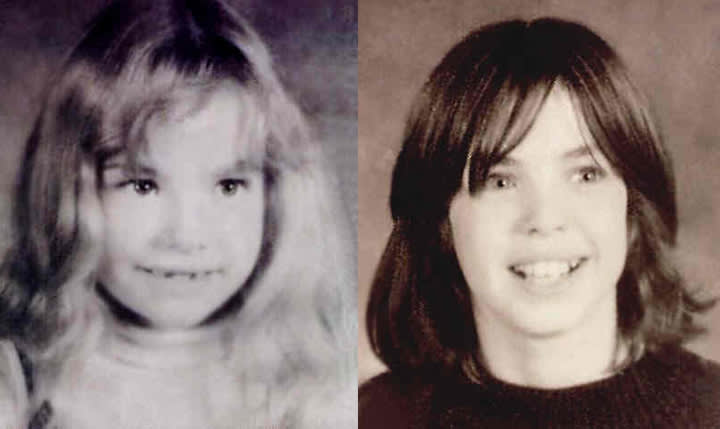

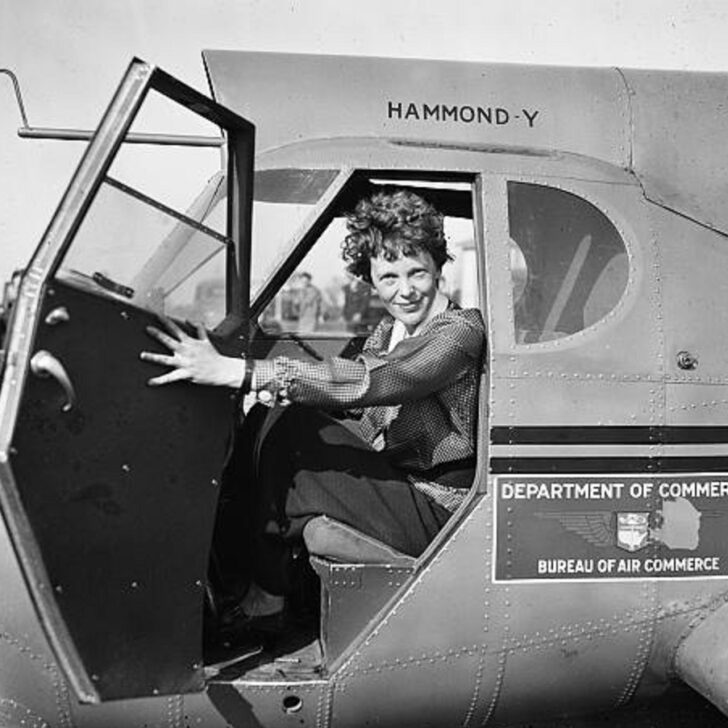
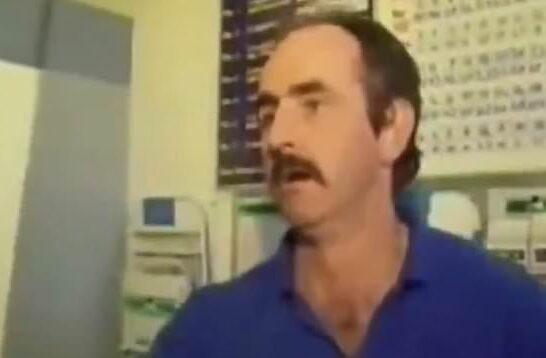



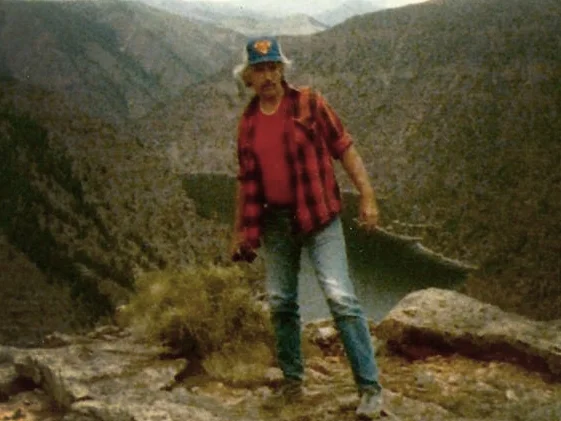
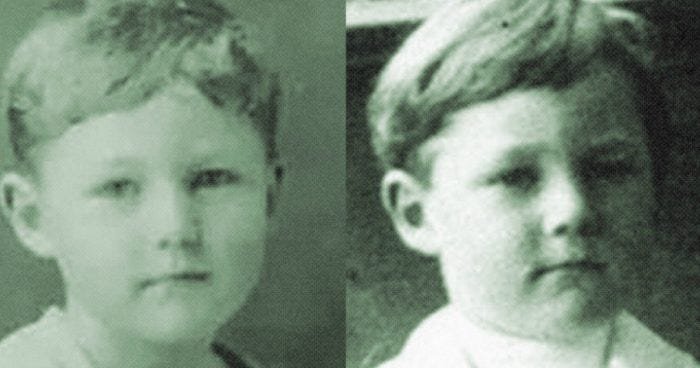

Leave a comment